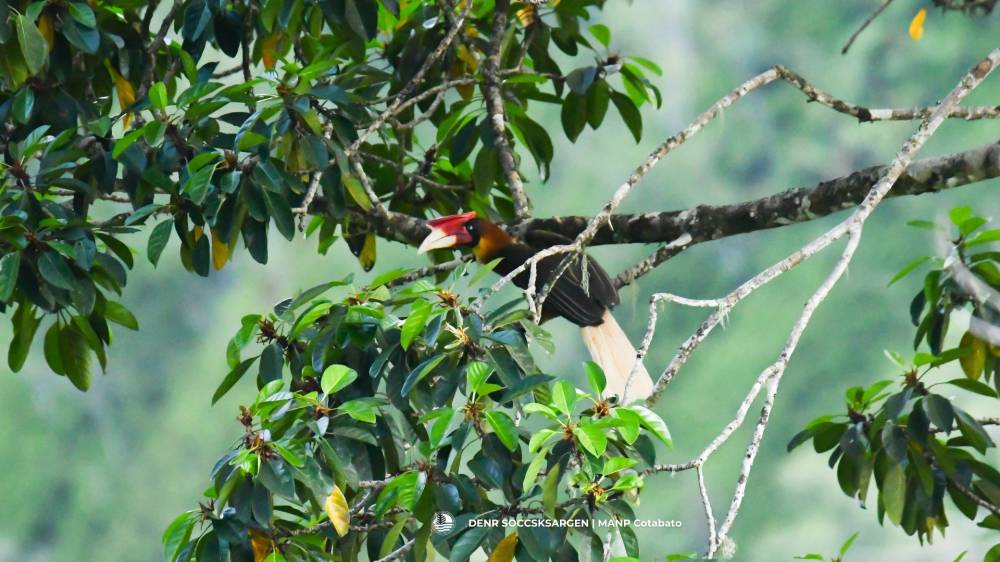Elusive ‘clock of mountains’ bird documented on Mt. Apo

KIDAPAWAN CITY—Another endangered wildlife has been documented by environmentalists in Mt. Apo Natural Park in Cotabato province, the Department of Environment and Natural Resources (DENR) said.
Felix Alicer, DENR regional director in Soccsksargen (South Cotabato, Cotabato, Sultan Kudarat, Sarangani and General Santos), said a team of biologists had recorded the first sighting of the elusive southern rufous hornbill (Buceros mindanensis) during a monitoring activity on May 2 in Magpet town.
According to Alicer, the southern rufous hornbill is endemic to Mindanao and is characterized by its dark reddish brown head and neck, and a red casque on top of its bill.
The upper part of its bill is red with ridges, while the lower part is lighter red with a yellowish-white front.
Its eyes are yellowish-grey, blue-grey or pale green, and it has black skin around its eyes, Alicer said. Both male and female birds have black underparts, a brown back and wings, and a white tail.
“This avian species’ honking calls serve as a reminder of the time of day resonating through the wilderness every hour. This unique characteristic has earned it the moniker ‘clock of the mountains’ among the Ubu Monuvu people, symbolizing its close connection to the natural rhythms of the forest,” Alicer described the bird in a statement released on Tuesday.
The Ubu Monuvu tribe is among the indigenous peoples known as custodian of Mt. Apo’s ancestral lands.
Critical role
Because it feeds on fruits, the southern rufous hornbill “assumes a critical ecological role in seed dispersal, thereby facilitating the regeneration and maintenance of invaluable forest ecosystems,” Alicer said.
The bird is listed as “vulnerable” by the International Union for Conservation of Nature.
Alicer said recent studies suggested that illegal hunting and poaching for the pet trade, coupled with habitat destruction, were driving forces behind the declining population of the southern rufous hornbill.
Last week, DENR personnel documented four Philippine trogon (Harpactes ardens), a bird species associated with the mythical “Ibong Adarna,” and two species of squirrels—the Philippine pygmy squirrel (Exilisciurus concinnus) and the Mindanao tree squirrel (Sundasciurus mindanensis), in the remaining forests of Mt. Apo, the country’s highest peak at 2,954 meters (9,692 feet) above sea level straddling Davao City and the provinces of Davao del Sur and Cotabato.





















